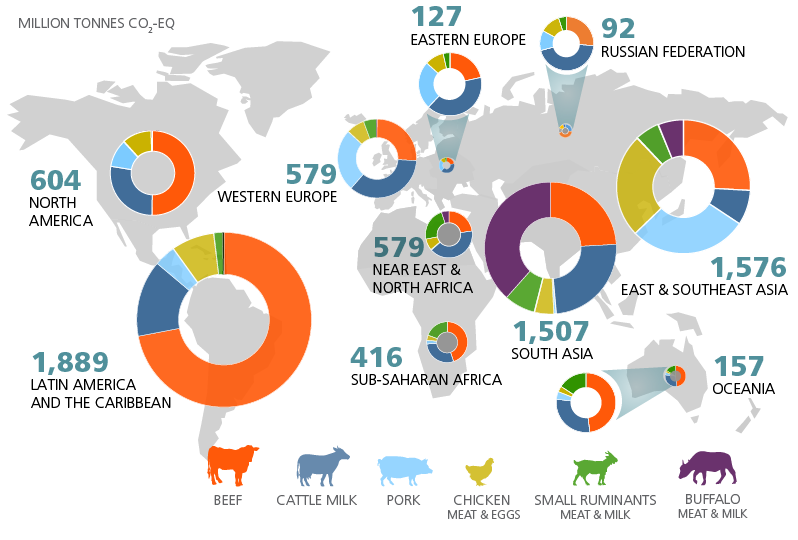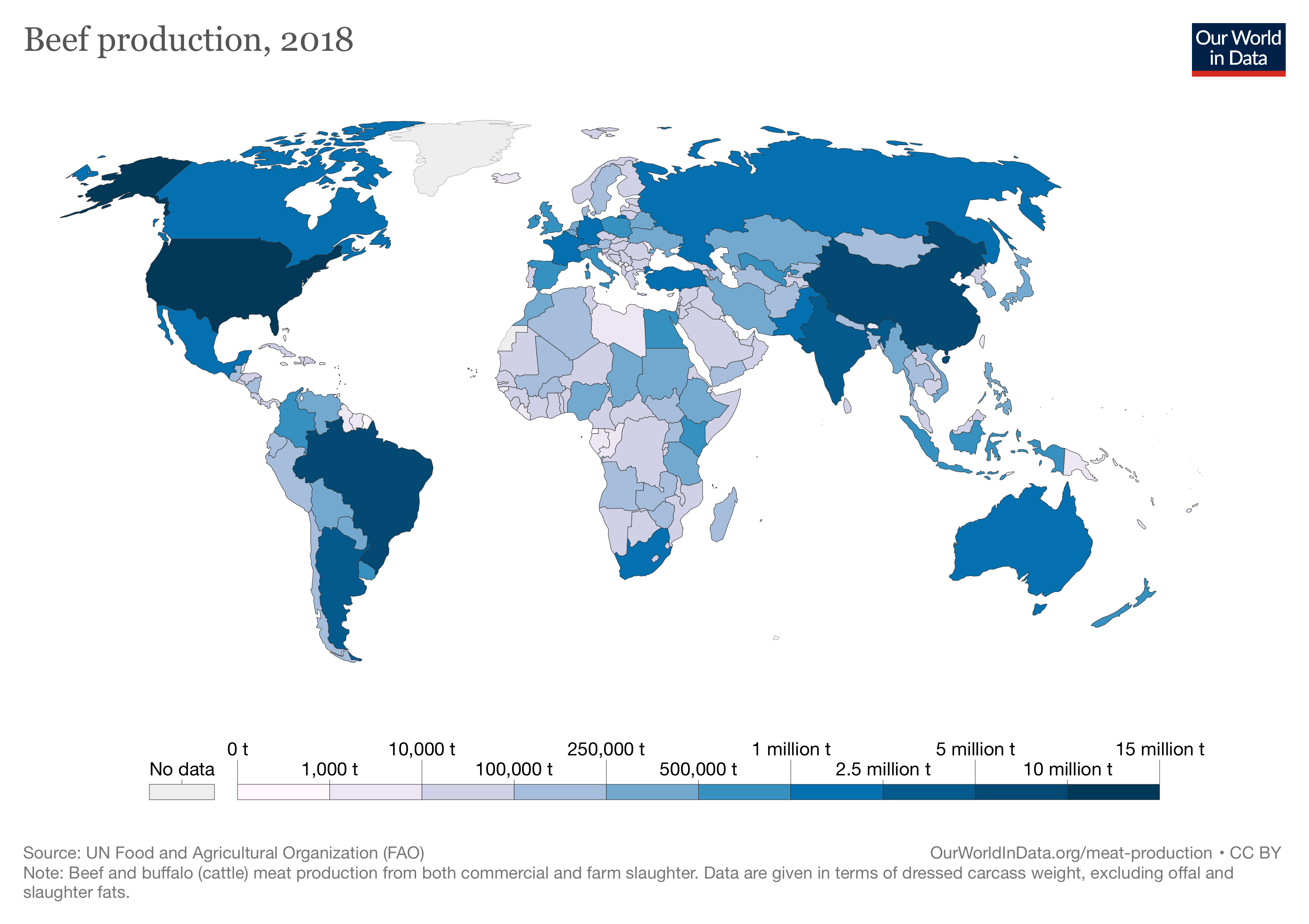
Greenhouse gas emissions from livestock production vary greatly in different parts of the world due to farming practices as well as animal numbers, type and food product. A new study finds emission intensity for the amount of protein produced could be reduced through more efficient farming practices, even as demand rises worldwide.
Credit: Food and Agriculture Organization of the United Nations CC BY-NC-SA 3.0 IGO
Adopting a plant-based diet can help shrink a person's carbon footprint. But a new study finds that improving the efficiency of livestock production will be an even more effective strategy for reducing global methane emissions.
The new study looked at the intensity of methane emissions from livestock production around the world - in other words, how much methane is released for each kilogram of animal protein produced - and made projections for future emissions. The authors found in the past two decades, advances in farming have made it possible to produce meat, eggs and milk with an increasingly smaller methane footprint.

Falling methane emission intensity: Livestock methane emission intensity per kilogram of protein produced decreased between the measured 4-year period in 2014-2018 compared to the earlier 2000-2004 period.
Regions are classified following the definition of the FAO Global Livestock Environmental Assessment Model (GLEAM): NAM, North America; RUS, Russia; WEU, western Europe; EEU, eastern Europe, NENA, Near East and North Africa; EAS, eastern Asia; OCE, Oceania; SAS, south Asia; LAC, Latin America and Caribbean; SSA, Sub-Saharan Africa. Additional graphs by animal available in Figure 3 of the new study.
Credit: Chang et al (2021) AGU Advances https://doi.org/10.1029/2021AV000391
Some countries, however, have not had access to the technology enabling these advances. The authors show that improving the efficiency of livestock farming, especially in some emerging economies, will be necessary to make meaningful cuts to methane emissions.
These efforts are predicted to have a greater impact than simply encouraging people to eat less meat, according to the new study, published today in AGU Advances, which publishes high-impact, open-access research and commentary across the Earth and space sciences.
The paper's results can help inform future climate policy, and the methods developed in the study will allow countries to make up-to-date estimations of their methane emissions from livestock.
The authors emphasize that these improvements should not come at the expense of the environment, as can occur in factory farming.
"We do not endorse the industrial livestock system for methane mitigation, because it causes many other environmental problems like pollution, failed manure management and land-use changes for grain and high-quality fodder," said Jinfeng Chang, an environmental scientist at Zhejiang University and first author of the new study. "There are many other more sustainable ways to improve efficiency."
Globally, raising animals for milk, meat and eggs accounts for one-third of human methane emissions. Dairy and beef cows are the top contributors, due in part to their large numbers. Also, cows are ruminant animals, like buffalo, sheep and goats, and the microbes in their guts produce methane as a by-product of breaking down their food. According to the Food and Agriculture Organization of the United Nations (FAO), methane emissions from livestock rose more than 50% between 1961 and 2018, and are expected to continue to rise as demand for animal products increases, especially in countries with growing populations and income.

The amount of beef and buffalo meat produced in countries worldwide. Among livestock, cattle are the largest contributor of greenhouse gas emissions.
Credit: OurWorldinData.org
In the study, the authors created new estimates of global methane production from livestock using the most recent methods proposed by the Intergovernmental Panel on Climate Change (IPCC). Next, they calculated the production efficiency for each country, using livestock production data from the FAO. The analysis looked at all types of animal products, including milk and meat from cattle, buffaloes, goats and sheep, pork products, poultry and eggs.
From 2000-2018, even as total emissions rose, the intensity of emissions from most types of livestock fell globally as production became more efficient. This drop resulted from advanced breeding practices and improvements in nutrition, which created animals that yielded more milk and meat.
When the authors looked at methane emissions under future scenarios, they saw that, while eating less meat will help, continuing these gains in production efficiency has even more potential for cutting methane, especially in countries with low efficiency and high future production. They calculate that under a "Business-As-Usual" socioeconomic scenario, agricultural improvements in the top 10 countries with the greatest potential to reduce methane could account for 60-65% of the decrease in global methane emissions by 2050 from increasing efficiency.
"They made it absolutely clear that improving production efficiency has much greater mitigating effect than demand-side efforts, particularly in low-income countries," said Ermias Kebreab, an animal scientist at the University of California, Davis, who was not involved in the research.
Kebreab agrees that increasing efficiency without causing environmental damage is possible and that some regions could improve their efficiency by up to 20%. With cattle, for example, cows adapted to the local environment can be bred with high-yield breeds to increase meat and milk production. Software in the local language can then formulate a balanced diet to support the crossbred cattle using feed available in the region. "It's just it's a matter of resource allocation."






